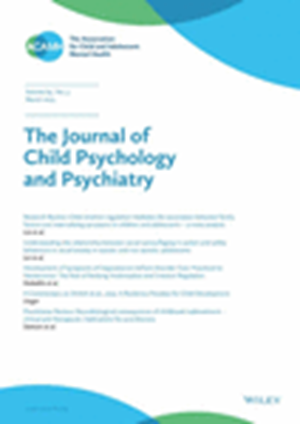Have parenting programs for disruptive child behavior become less effective?
IF 7
1区 医学
Q1 PSYCHIATRY
引用次数: 0
Abstract
BACKGROUND Behavioral parenting programs have been exhaustively studied over the past five decades. We used this wealth of research to examine how estimates of parenting program effects have evolved over time, and if any time trends in effect estimates can be explained by trial, sample, or intervention characteristics. METHODS We based our meta-analysis on a systematic search of 22 international and regional databases, gray literature, and 4 trial registries for randomized controlled trials of behavioral parenting programs. RESULTS We identified 244 eligible trials (1,100 effect sizes; 28,916 families) from 36 countries. Parenting program effects initially reduced and then stabilized. More recent trials used more rigorous methods (e.g., more active control conditions and less risk of bias), samples that were generally older and included more girls, and evaluated interventions that on average had fewer sessions, were more often delivered by independent staff and made less use of time-out. However, none of these developments explained the initial reduction in effect size estimates during the first decades. CONCLUSIONS Our findings suggest that estimates of parenting program effects are currently stable: Effect sizes are no longer reducing but there is also no evidence of increases over time. Experimentation with the content, delivery, and personalization of parenting programs is needed to identify ways to increase program effects.针对破坏性儿童行为的育儿计划变得不那么有效了吗?
在过去的50年里,人们对行为育儿项目进行了详尽的研究。我们利用这些丰富的研究来检验对育儿计划效果的估计是如何随着时间的推移而演变的,以及是否有任何时间趋势可以用试验、样本或干预特征来解释。方法:我们基于对22个国际和地区数据库、灰色文献和4个行为育儿项目随机对照试验的试验注册库的系统检索进行meta分析。我们确定了来自36个国家的244项符合条件的试验(1100个效应量;28,916个家庭)。育儿计划的效果最初减弱,然后趋于稳定。最近的试验采用了更严格的方法(例如,更积极的控制条件和更少的偏差风险),样本通常年龄较大,包括更多的女孩,评估的干预措施平均疗程更少,更经常由独立工作人员提供,使用暂停时间更少。然而,这些发展都不能解释最初几十年效应量估计值的减少。我们的研究结果表明,对育儿计划影响的估计目前是稳定的:影响大小不再减少,但也没有证据表明随着时间的推移会增加。需要对育儿项目的内容、方式和个性化进行试验,以确定提高项目效果的方法。
本文章由计算机程序翻译,如有差异,请以英文原文为准。
求助全文
约1分钟内获得全文
求助全文
来源期刊
CiteScore
13.80
自引率
5.30%
发文量
169
审稿时长
1 months
期刊介绍:
The Journal of Child Psychology and Psychiatry (JCPP) is a highly regarded international publication that focuses on the fields of child and adolescent psychology and psychiatry. It is recognized for publishing top-tier, clinically relevant research across various disciplines related to these areas. JCPP has a broad global readership and covers a diverse range of topics, including:
Epidemiology: Studies on the prevalence and distribution of mental health issues in children and adolescents.
Diagnosis: Research on the identification and classification of childhood disorders.
Treatments: Psychotherapeutic and psychopharmacological interventions for child and adolescent mental health.
Behavior and Cognition: Studies on the behavioral and cognitive aspects of childhood disorders.
Neuroscience and Neurobiology: Research on the neural and biological underpinnings of child mental health.
Genetics: Genetic factors contributing to the development of childhood disorders.
JCPP serves as a platform for integrating empirical research, clinical studies, and high-quality reviews from diverse perspectives, theoretical viewpoints, and disciplines. This interdisciplinary approach is a key feature of the journal, as it fosters a comprehensive understanding of child and adolescent mental health.
The Journal of Child Psychology and Psychiatry is published 12 times a year and is affiliated with the Association for Child and Adolescent Mental Health (ACAMH), which supports the journal's mission to advance knowledge and practice in the field of child and adolescent mental health.

 求助内容:
求助内容: 应助结果提醒方式:
应助结果提醒方式:


